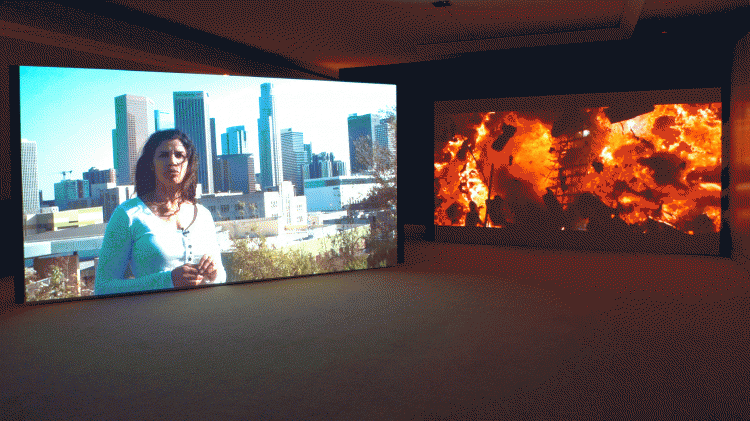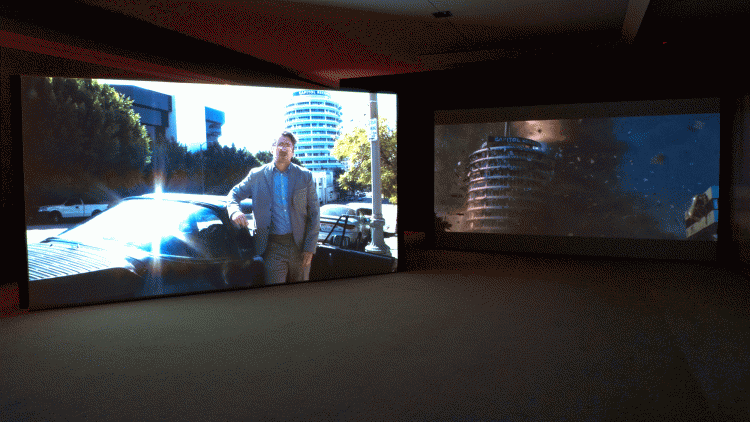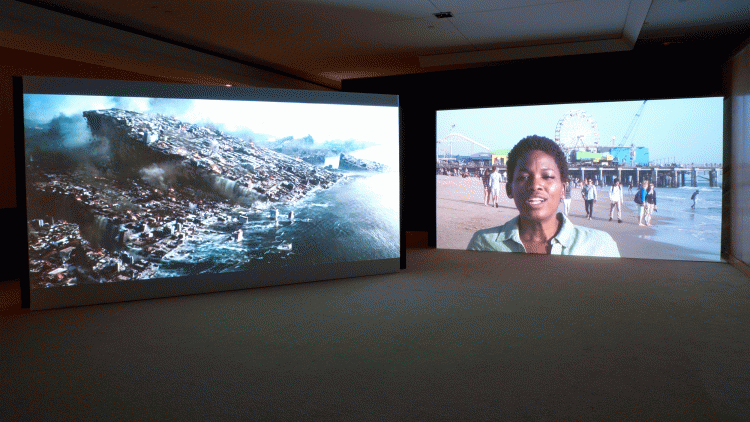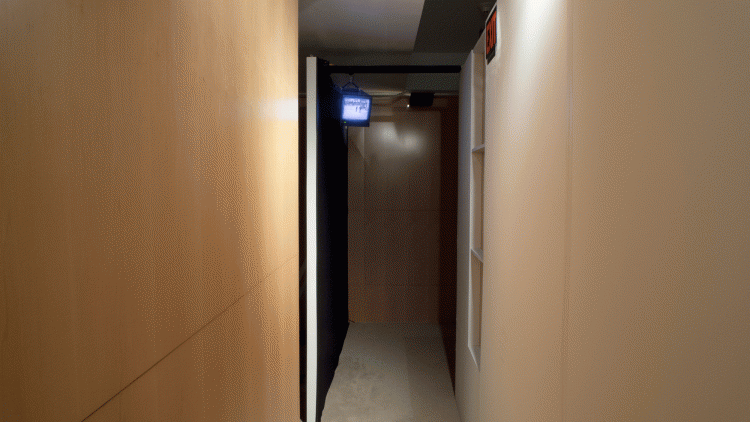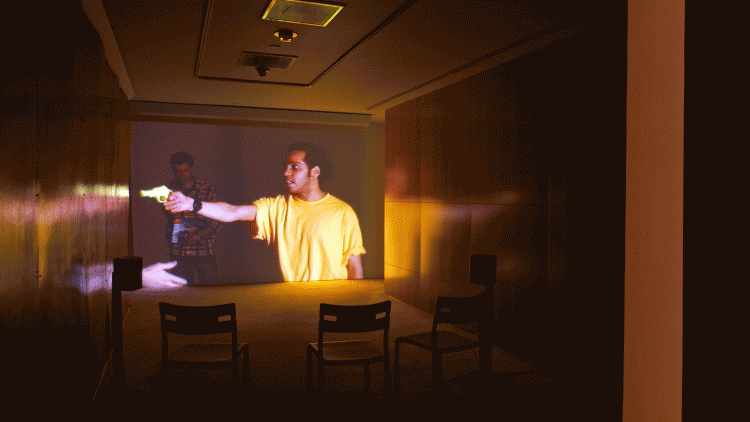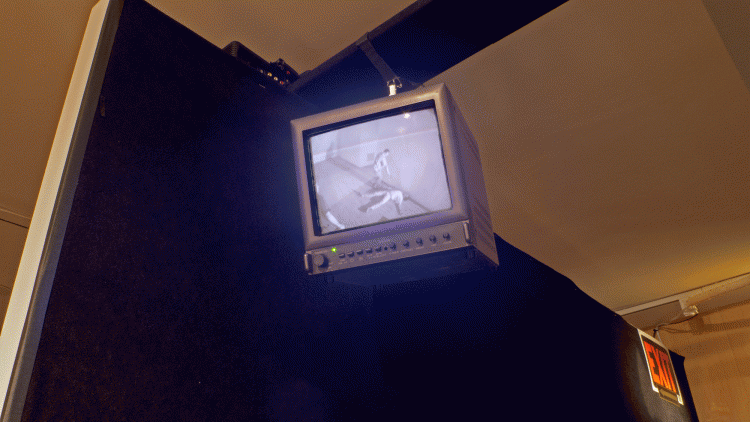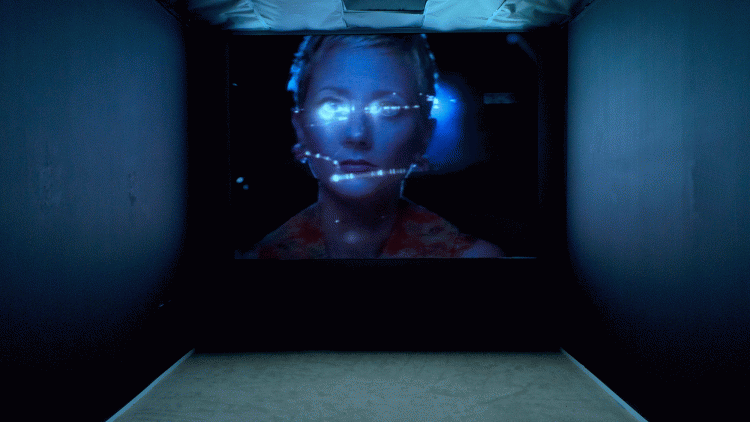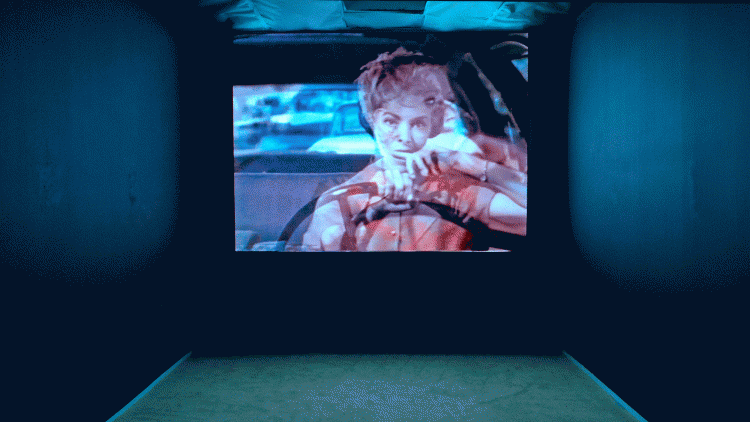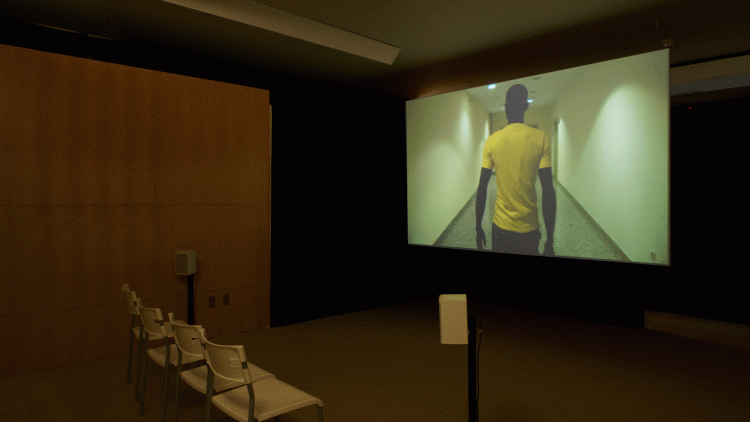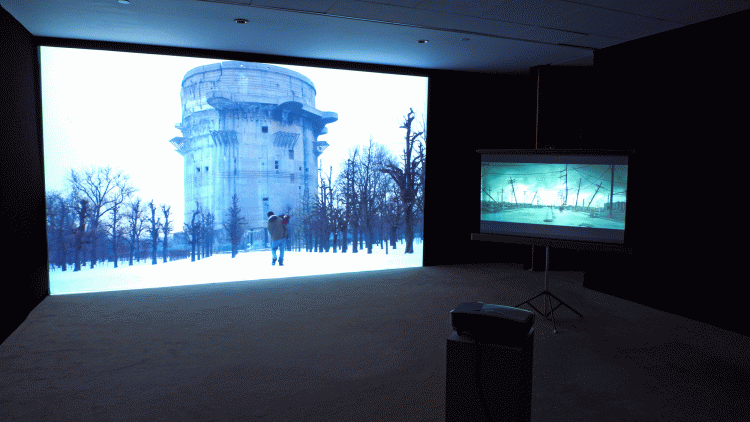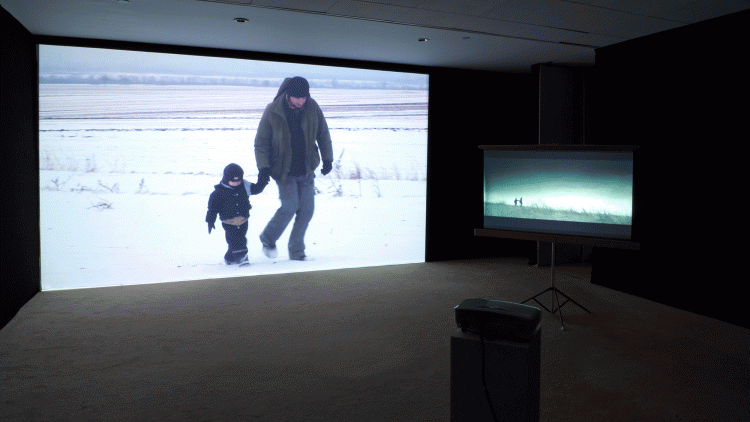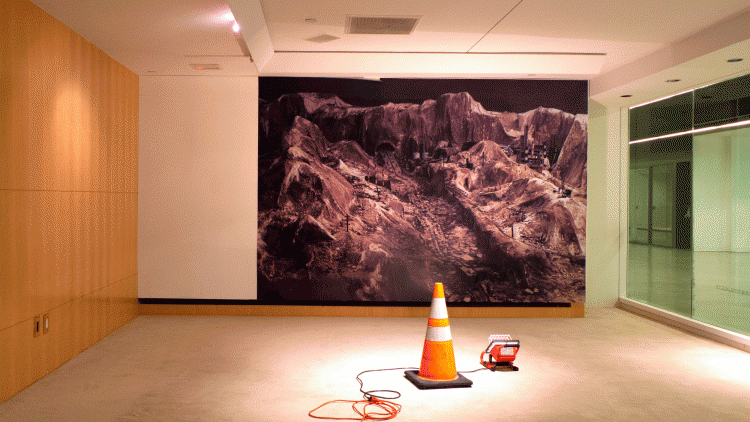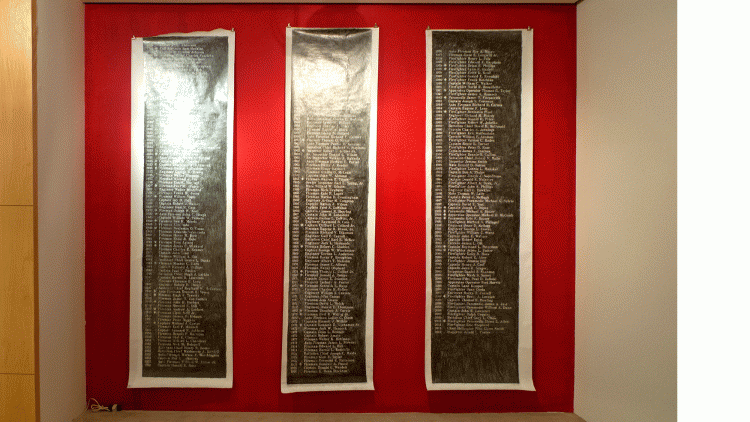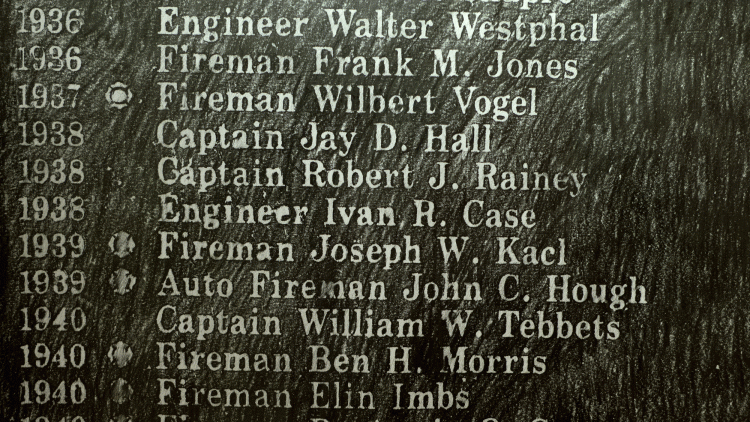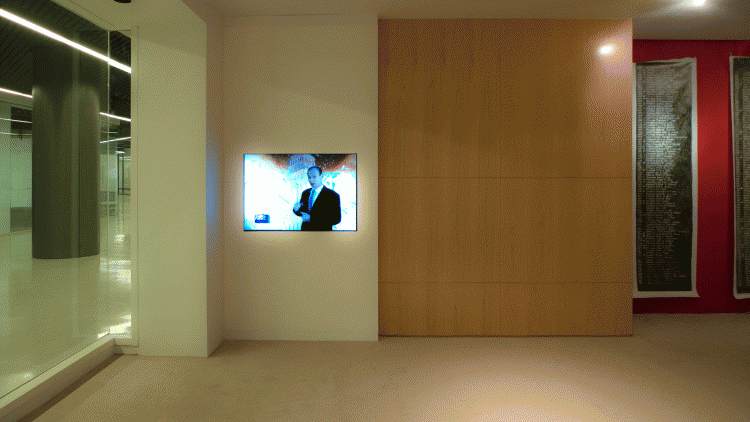Christoph Draeger's
Destroying L.A.
Young Projects, Pacific Design Center B230, Los Angeles, June - September, 2015
https://www.youngprojectsgallery.com/christoph-draeger
L.A. Times Review from Aug 1st, 2015
Press release
Young Projects and the Swiss Arts Council, Pro Helvetia, are pleased to present the first survey of Christoph Draeger's video work in the US.Draeger’s extensive and multidisciplinary practice includes photography, installations, sculpture, video and film. Much of it deals the representation of destruction world-wide--from terrorist attacks to natural disasters. He is perhaps best known for pioneering the amateur-style “re-make”, where everyday people reenact particularly emblematic scenes from well-known Hollywood-style films. "Destroying L.A." features eight installations, including several 2-channel works and some of Draeger's best known videos.
Destruction and catastrophe have always loomed large in the work of the Swiss artist Christoph Draeger—that includes terrorist attacks, hurricanes, mass shootings, earthquakes, air disasters, nuclear meltdowns, hijackings and hostage situations. In fact, in some cases the subject matter is so raw that some of his films have been banned, censored or even shut down on occasion. At first it might be temping to suggest that Draeger’s interest might be cynical or exploitative. But in truth, just like the subject matter he’s investigating, there are no easy answers as to why he’s exploring the themes that he does. The exploitation of violence might certainly but in truth the exploitation he’s exploring and interrogating is the exploitation spread by the media itself. What’s more, his inspiration comes less from the event itself, than the way in which it’s remembered, conveyed and expressed as an event within the public realm.Therefore it is only natural that Draeger would create a work shortly after the terrorist attacks of 9-11. At that time he and his associate Reynold Reynolds, made a mock news cast called The Last News (2002) which portrayed a number of disasters taking place simultaneously around the world. Yet instead of news footage, the artist purposely used scenes from well-known Hollywood disaster films—such as the destruction of Big Ben, the Eiffel Tower and the Chrysler Building—as “news.” By doing so the artists not only underscored the extreme hyperbole that they witnessed on American TV shortly after 9-11, but also made an obvious connection between Al-Qaeda-style terrorism with the Hollywood disaster aesthetic. (Katja Haustein and others have argued that terrorists, including Osama bin Laden, have often looked to Hollywood-style catastrophe when planning their own terrorist acts).
More recently Draeger explored apocalypse once again in The Rd. (2013) which conveys something altogether different—both in terms of content and Draeger’s own aesthetic sensibilities. The piece is based the film adaptation of The Road, which itself was based on the Pulitzer prize winning novel by Cormac McCarthy. Here Draeger attempted to recreate the film as closely as possible, specifically to address his own issues of becoming a young father (just as McCarthy did with the book). Therefore he cast himself and his then 3-year-old son in the roles played by Viggo Mortenson and his on screen child. Together they wander a snow-covered Viennese landscape while Mortenson’s voice over from the original film version describes a father/son’s epic struggle. The difference between The Rd. and earlier videos where Draeger has remade well-known motion films, is that Draeger presents both the original and the copy as a synched, side-by-side, two-channel videos, where each film exists on its own screen, unified only by the voice-over narration.
Draeger followed a similar visual approach for his most recent work, Destroying LA (2014), only here he combines essay-style documentary filmmaking with appropriation and re-enactment. The film consists of five sequences, each depicting a well-known scene of LA’s mass destruction culled from feature films with a recreation and commentary on the opposing screen. These recreations all take place in the very location where the supposed disaster took place and feature text that often mocks the original film. However, the actors who are reading the text are clearly not acting, and their delivery is unrehearsed, forced and sometimes awkward (obviously in contrast to the so-called Hollywood style).
Susan Sontag’s influential essay, “The Imagination of Disaster” (1964) could be seen as a key reference point for Destroying LA in that it draws a direct parallel between the ever-increasing need for scale within Hollywood filmmaking and the ever-increasing use of mass disaster as subject matter. But Draeger is also interested in the fact that the disasters depicted are representations first and foremost, enacted by actors and extras and not documentaries or newsreels. His interest is in the fabrication of the event by both artists and “news” sources who claim that their ‘representations’ are ‘real.’ (He has also remade tragedies such as the Olymopic terrorist attack of 1972—three years before Spielberg did—which are generally known entirely through news reports). Or as Daniel Binswanger writes, “as much as Draeger fixates on catastrophes in his content, the form of his works approaches more of a poetry of disaster: the earthen identity of posthistoire exposes itself as an ideological construct when it trips itself in front of the scrupulous lens of the video camera.”
Perhaps the best example of this is Draeger’s Feel Lucky, Punk??! (1997-2000), which is currently on view at CA2M Contemporary Art Center in Madrid. This two-channel video work, which is now considered one of the key videos of the 1990s, consists of 5 “remakes” where average people re-enact scenes pulled from well-known Hollywood films: Taxi Driver, Pulp Fiction, Thelma & Louise, Natural Born Killers and Magnum Force. In terms of Feel Lucky, Punk??! Draeger specifically set out to create the work not for a big screen, but a small surveillance monitor that he found in a thrift store. (The monitor had been used for so many years that he could still see the ghostly image of the store that donated it, and Draeger immediately began to envision re-enactments from well-known films within that small space—ie Travis Bickle’s killing of a thief in a Manhattan liquor store.)
A number of critics have argued that remakes in general not only underscore the canonical nature of the original, but highlight the role of the intertextural, as Julia Kristeva has documented so well. Both are clearly evident in Feel Lucky, Punk ??! as well as many of Draeger videos, where film quotations ultimately reflect the intertextural nature of the original. It’s crucial to note that Taxi Driver, Pulp Fiction, Thelma & Louise, Natural Born Killers, and Magnum Force in Feel Luck, Punk??! for instance were made by ‘cinephile directors’ who often quote their own favorite films and filmmakers in their own works on occasion. So Draeger’s quotation of other quotations is meant to create a hall of mirrors that he complicates with his own interrogation.
What’s more Draeger’s interest in re-creations by amateur actors and filmmakers—which he pioneered in the 1990s—is equally essential to any discussion of his works. In many ways Draeger anticipated what Andrew Keen has described as the “Cult of the Amateur” which now defines the age of the internet, where everyday people are now the “stars” of today. Like any artistic dialogue that occurs between a representation of a representation, Draeger’s blatant, often utterly banal mimicry often say far more about ourselves than any professional, Hollywood-style film could ever do—whether it has to do with very real issues dealing with violence or the very real issue of apathy and trauma.
One of the clearest examples of this can be found in Draeger’s series of photographs that he has been producing for the past decade. In each image the artist visits a well-known site where a major catastrophe once occurred—from Pompei to Hiroshima, from Leogane to Krakatoa. And yet in each case Draeger shoots each location with the most straight-forward, simple and mundane approach possible, much like cell phone photos by common tourists. The only indication of disaster therefore, is in the name of the location. If there are scars to be seen they’re only in our collective memories. But they’re scars nonetheless, and one can always find beauty in scars.
Bio
Born in Zurich, Switzerland, Christoph Draeger lives in New York and Vienna, Austria. Draeger’s work has been the subject of solo shows at numerous institutions worldwide. They include: Kunsthaus Zürich/Switzerland, OK Center for Contemporary Art Linz/Austria, Kunstmuseum Solothurn/Switzerland, Centre d'Art Contemporain Yverdon/Switzerland, Centre d'Art Contemporain Ibos Tarbes/France, Halle für Kunst Lüneburg/Germany, Kunsthalle Arbon/Switzerland. He participated in group shows at P.S. 1, the New Museum, MoMA, the Brooklyn Museum and the Whitney Museum, Kunstwerke Berlin, Musée d'Art moderne Les Abattoirs Toulouse/France, Centre Pompidou in Paris, Montevideo in Amsterdam, the Van Abbe Museum in Eindhoven NL, and the 2013 Venice Biennial, the Moscow Biennial, the Liverpool Biennial, the Kwangju Biennial, among many others
Draeger’s work can be found in the collections of the Whitney Museum of American Art and the Brooklyn Museum in New York; the Kunsthaus Zurich, Switzerland; Centre Pompidou, Paris, Musée d'Art moderne Les Abattoirs Toulouse/France, among others

